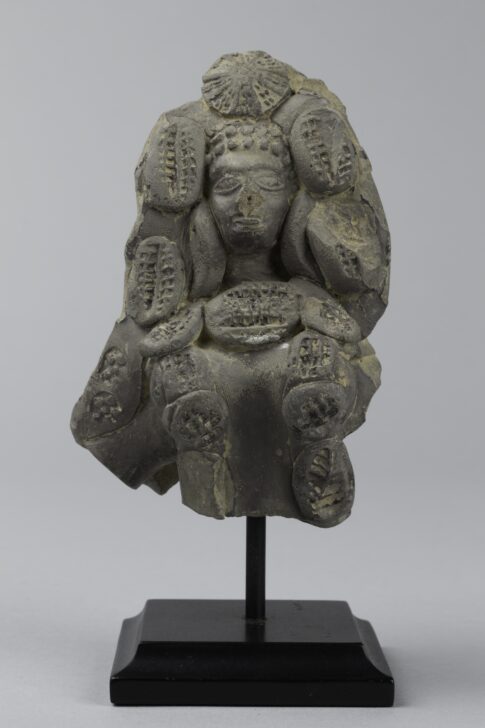Mother Goddess
Indian

Description
March 28, 2009
The enduring importance of the mother figure is borne out by the fact that all of the major religious traditions that originated in South Asia—Hinduism, Jainism, and Buddhism, in their various forms—at some point incorporated female deities. Worship of a mother goddess was widespread across the northern part of the Indian subcontinent as far back as the third millennium. Small images with elaborate hairstyles and jewelry were modeled from clay by hand or, as in the example shown here, with the aid of a mold, and enhanced with appliquéd and punched designs. With their intricate coiffures and jewelry, these figures symbolize prosperity as well as fecundity and good health.
(Label for UMMA South and Southeast Asia Gallery Opening Rotation, March 2009)
Subject Matter:
Worship of a mother goddess was widespread across northern India as far back as the third millennium BCE, during the age of the Indus Valley Civilization. Throughout the centuries, village women have created their own votive figures from clay, an inexpensive material that was always available. Small images were made entirely by hand or, as in this case, with the aid of a mold. Bits of clay were then appliquéd to the surface and decorated with punched patterns for a very pleasing effect. This mother goddess is the oldest object in the exhibition.
Physical Description:
This black terracotta is broken at the waste and depicts a simple body decorated with globs of clay decorated with punch-marked decorations. The face is modeled a bit more realistically with wide-open eyes and a full mouth. The front of her hair is in a series of rounded ball-like curls and a circular starburst decoration is at the top. The other oval globs frame the face of the goddess and cascade down what is left of her body.
Usage Rights:
If you are interested in using an image for a publication, please visit https://umma.umich.edu/request-image/ for more information and to fill out the online Image Rights and Reproductions Request Form.